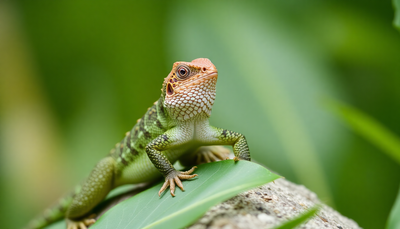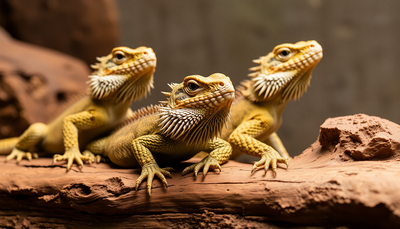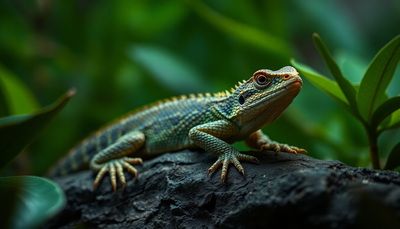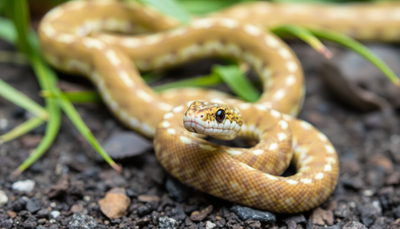
Choosing the Right Reptile Heat Lamp Holder
Choosing the right reptile heat lamp holder is crucial for the well-being of your pet. Reptiles are ectothermic animals, meaning they rely on external heat sources to regulate their body temperature. A heat lamp holder not only provides the necessary heat for your reptile but also ensures their safety and comfort. With a wide range of options available in the market, it can be overwhelming to make the right choice. However, by understanding the key factors to consider, you can easily find the perfect heat lamp holder for your pet. In this article, we will explore the important aspects to look for when selecting a reptile heat lamp holder. We will discuss the different types of holders, their features, and how they can benefit your reptile. Additionally, we will provide tips for installation and maintenance.
Understanding Reptile Heat Lamp Holders
Definition and Purpose of a Reptile Heat Lamp Holder
A reptile heat lamp holder is an essential accessory for reptile owners. It is designed to securely hold heat lamps in place, providing the necessary heat and light for reptiles to thrive in their enclosures. The main purpose of a heat lamp holder is to ensure the safety of both the reptiles and their owners by preventing the lamp from falling or causing any accidents.
Common Types of Heat Lamp Holders Available in the Market
-
Clamp Lamp Holders
One of the most popular types of reptile heat lamp holders is the clamp lamp holder. As the name suggests, these holders come with a clamp that allows them to be attached to various surfaces, such as the sides or tops of reptile enclosures. Clamp lamp holders offer versatility and flexibility in terms of adjusting the position and angle of the lamp, ensuring optimal heat and light distribution.
-
Ceramic Heat Lamp Holders
Ceramic heat lamp holders are another common option for reptile owners. These holders are made of heat-resistant ceramic material, which helps to prevent overheating and melting. Ceramic heat lamp holders are often used with high-wattage heat bulbs and provide a stable and secure platform for the lamp. They are suitable for use with a variety of reptile enclosures, including glass terrariums and wire cages.
-
Dome Lamp Holders
Dome lamp holders are specifically designed for use with dome-shaped heat lamps. These holders feature a wide base and a dome-shaped top that accommodates the shape of the lamp. Dome lamp holders are typically made of sturdy materials such as metal or plastic, ensuring durability and stability. They are easy to install and provide a safe and reliable way to position heat lamps in reptile enclosures.
Factors to Consider When Choosing a Reptile Heat Lamp Holder
-
Size and compatibility with your reptile enclosure
When choosing a reptile heat lamp holder, it is important to consider the size and compatibility with your reptile enclosure. The heat lamp holder should be large enough to securely hold the heat lamp without it being too close to your reptile. It should also be compatible with the type and size of heat lamp you plan to use. Check the specifications of both the heat lamp and the holder to ensure a proper fit.
-
Material and durability of the heat lamp holder
The material and durability of the heat lamp holder are crucial factors to consider. Look for a heat lamp holder made of high-quality materials that can withstand the heat generated by the lamp. Metal holders are often the most durable option, but make sure they are coated with a heat-resistant finish to prevent any potential burns.
-
Heat output and adjustability options
Consider the heat output and adjustability options of the heat lamp holder. Different reptiles have different temperature requirements, so it is important to choose a holder that allows you to adjust the distance between the heat lamp and your reptile. Some holders also come with built-in temperature controls, allowing you to easily regulate the heat output.
-
Safety features and protection against burns
Safety should always be a top priority when choosing a reptile heat lamp holder. Look for holders that come with safety features such as a protective mesh guard or a heat shield to prevent your reptile from coming into direct contact with the heat lamp. This will help reduce the risk of burns and injuries.
-
Ease of installation and maintenance
Lastly, consider the ease of installation and maintenance of the heat lamp holder. Choose a holder that is easy to install and securely attach to your reptile enclosure. Additionally, opt for a holder that is easy to clean and maintain to ensure the longevity of both the holder and the heat lamp.
Selecting the Right Heat Lamp Holder for Different Reptile Species
When it comes to selecting the right heat lamp holder for your reptile, it is important to consider the specific needs of the species you have. Different reptiles have different requirements when it comes to their heat source, and choosing the right lamp holder is crucial for their well-being.
Reptile species with specific heat lamp holder requirements
1. Desert-dwelling reptiles
Desert-dwelling reptiles, such as bearded dragons and leopard geckos, require a heat lamp holder that can provide them with a basking spot and mimic the natural desert environment. A ceramic heat lamp holder with a reflector is a good choice for these species, as it can provide a focused and intense heat source.
2. Tropical reptiles
Tropical reptiles, like green iguanas and chameleons, need a heat lamp holder that can create a warm and humid environment. A dome heat lamp holder with a built-in humidity control feature is recommended for these species. This type of holder allows you to adjust the temperature and humidity levels to mimic their natural habitat.
3. Arboreal reptiles
Arboreal reptiles, such as tree frogs and crested geckos, require a heat lamp holder that can provide them with a comfortable basking spot in their elevated habitat. A clamp lamp holder with an adjustable arm is ideal for these species, as it allows you to position the lamp at the right height and angle for their needs.
Recommended heat lamp holders for each reptile species
To make it easier for reptile owners to select the right heat lamp holder, here are some recommended options for each species:
- Desert-dwelling reptiles: Ceramic heat lamp holder with reflector
- Tropical reptiles: Dome heat lamp holder with built-in humidity control
- Arboreal reptiles: Clamp lamp holder with adjustable arm
These recommended heat lamp holders have been chosen based on the specific requirements of each reptile species. However, it is important to note that individual reptiles may have slightly different needs, so it is always best to consult with a reptile expert or veterinarian for personalized advice.
Tips for Proper Installation and Usage of Reptile Heat Lamp Holders
Properly positioning and using a heat lamp holder is crucial for the well-being of your reptile. Follow these tips to ensure the safety and comfort of your reptile companion:
Placement of the heat lamp holder within the enclosure
The ideal placement of the heat lamp holder is directly above a basking spot or a designated heat source area. This allows your reptile to receive the necessary heat and light for their overall health and well-being.
Distance between the heat lamp and the reptile
Maintain the appropriate distance between the heat lamp and your reptile. The recommended distance may vary depending on the reptile species and the wattage of the heat lamp. In general, a distance of 12-18 inches is suitable for most reptiles. Refer to specific guidelines for your reptile species to ensure their safety and comfort.
Use of lamp stands or brackets for secure positioning
Use lamp stands or brackets to securely position the heat lamp holder. These accessories provide stability and prevent accidental falls or shifts that could harm your reptile. Make sure the lamp stand or bracket is compatible with your heat lamp holder and can support its weight.
Regular monitoring of temperature and adjusting as needed
Regularly monitor the temperature within the reptile enclosure. Use a reliable thermometer to measure the temperature at the basking spot or heat source area. If the temperature is too high or too low, adjust the position of the heat lamp or modify the wattage accordingly. Maintaining a proper temperature gradient is vital for your reptile's thermoregulation and overall health.
By following these tips for the proper installation and usage of reptile heat lamp holders, you can create a safe and comfortable environment for your reptile companion. Always refer to specific guidelines for your reptile species and consult with a veterinarian or reptile expert if you have any concerns or questions. Providing the right heat and light is essential for the well-being, happiness, and vitality of your reptile.
Maintenance and Troubleshooting of Reptile Heat Lamp Holders
Cleaning and Replacing the Heat Lamp Holder Components
To ensure the proper functioning of your reptile heat lamp holder, regular cleaning and maintenance are essential. Here's how you can clean and replace the heat lamp holder components:
- Disconnect the power: Before starting any maintenance, make sure to disconnect the power source to avoid any accidents.
- Remove the bulb: Gently twist and remove the reptile heat lamp bulb from the holder.
- Clean the components: Use a soft cloth or sponge dampened with warm water and mild soap to clean the heat lamp holder components. Avoid using harsh chemicals or abrasive materials that may damage the holder.
- Check for debris: Inspect the socket and other parts for any debris or dirt. Use a soft brush or cotton swab to remove any accumulated dust or dirt.
- Replace damaged parts: If you notice any damage to the socket, wiring, or other components, it is important to replace them. Contact your reptile heat lamp holder manufacturer or supplier for the appropriate replacement parts.
- Reassemble the holder: Once all the components are clean and in good condition, reassemble the heat lamp holder carefully. Make sure all the parts fit securely and the bulb can be easily inserted.
Troubleshooting Common Issues with Heat Lamp Holders
Even with regular maintenance, you may encounter some common issues with your reptile heat lamp holder. Here are a few troubleshooting tips:
- Bulb flickering or not turning on
- Check the bulb: Ensure that the bulb is properly inserted and securely screwed into the holder. If the bulb is loose or damaged, replace it with a new one.
- Check the power supply: Verify that the power source is working correctly and providing the necessary voltage. If needed, try plugging the holder into a different outlet or using a different power cord.
- Test the holder: If the above steps don't resolve the issue, try using a different bulb to determine if the problem lies with the holder itself. If the new bulb works, the original bulb may be faulty, and if the new bulb doesn't work, there may be an issue with the holder that requires professional assistance.
- Excessive heat or insufficient heating
- Check the wattage: Ensure that you are using the correct wattage bulb for your reptile's enclosure. Using a bulb with a higher wattage than recommended can lead to excessive heat, while a lower wattage bulb may not provide sufficient heating.
- Monitor the temperature: Use a reliable thermometer to monitor the temperature inside the enclosure. Adjust the positioning of the heat lamp and the distance between the lamp and the reptile's basking spot to achieve the desired temperature gradient.
- Consider the environment: Factors such as room temperature, humidity levels, and insulation can affect the heat distribution within the enclosure. Make sure the enclosure is located in an appropriate area and take necessary measures to maintain the ideal conditions.
By following these maintenance and troubleshooting guidelines, you can ensure the longevity and optimal performance of your reptile heat lamp holder. Remember to always prioritize safety and consult a professional if you encounter any persistent issues or are unsure about any aspect of maintenance or troubleshooting.
Choosing the Right Reptile Heat Lamp Holder
Choosing the right reptile heat lamp holder is crucial for the well-being and safety of your pet. A high-quality heat lamp holder will provide a secure and stable platform for your reptile's heat source, ensuring that it stays in place and does not pose any risk of falling or causing burns.
Consider Your Pet's Needs
- When selecting a reptile heat lamp holder, consider the specific needs of your pet.
- Look for a holder that is compatible with the type and wattage of heat lamp you are using.
- Opt for a holder that is adjustable, allowing you to position the heat lamp at the optimal distance from your reptile's enclosure.
Komodo Heat Lamp Holder
One option to consider is the Komodo Heat Lamp Holder available at Talis US. This holder offers a sturdy design and adjustable height, allowing you to create the perfect heat source setup for your reptile.
Click here to check out the Komodo Heat Lamp Holder and ensure the safety and comfort of your pet.
Proper Temperature Regulation
Remember, proper temperature regulation is essential for reptiles to thrive, so investing in a reliable heat lamp holder is a wise choice. By providing the right heat and light, you can create a comfortable and healthy environment for your reptile.
Research and Choose Wisely
Take the time to research and choose the right heat lamp holder for your reptile's specific needs. Your pet will thank you for it with their continued health and happiness.
Click here to explore the Komodo Heat Lamp Holder and provide your reptile with the best possible heat source setup.






